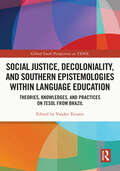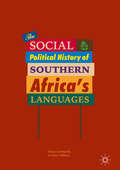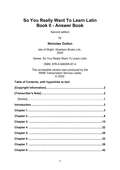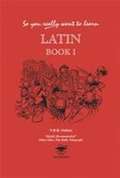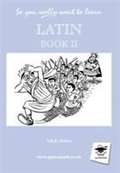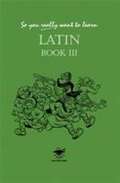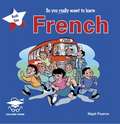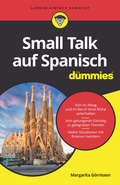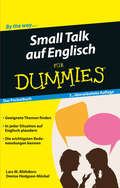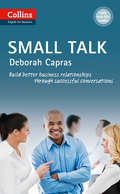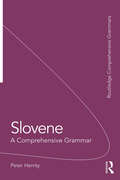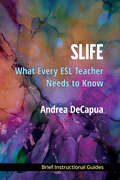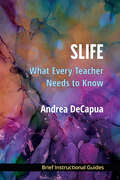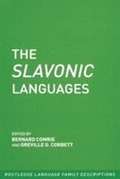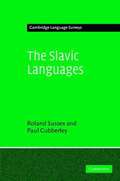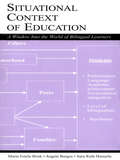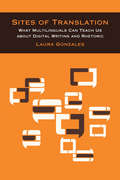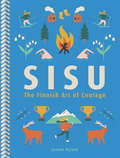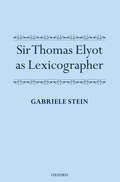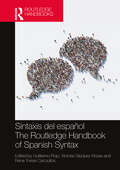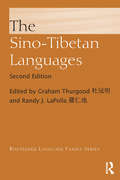- Table View
- List View
Social Justice, Decoloniality, and Southern Epistemologies within Language Education: Theories, Knowledges, and Practices on TESOL from Brazil (Global South Perspectives on TESOL)
by Vander TavaresWith a strong focus on decoloniality and social justice, this volume brings together critical theories, concepts, and practices on TESOL from multiple Brazilian perspectives. The chapters showcase the work of teachers and teacher educators in confronting sociopolitical issues in Brazil, including in the domains of democracy, language education, and knowledge production, as well as prevailing issues within TESOL itself. Contributions stem from an eclectic range of analytical orientations that reflect ontological and epistemological diversity while demonstrating why, where, and how TESOL is done in Brazil. In doing so, this volume also establishes a place for Southern voices to be heard in the move toward challenging complex and long-standing issues of representation, marginalization, and exclusion that have traditionally characterised North-South relations in TESOL as a field. This volume seeks to promote Southern-based conversations about decoloniality and social justice in TESOL and will be of direct relevance to graduate students, researchers, and scholars in the field of TESOL and foreign language education.
Social Justice, Decoloniality, and Southern Epistemologies within Language Education: Theories, Knowledges, and Practices on TESOL from Brazil (Global South Perspectives on TESOL)
by Vander TavaresWith a strong focus on decoloniality and social justice, this volume brings together critical theories, concepts, and practices on TESOL from multiple Brazilian perspectives. The chapters showcase the work of teachers and teacher educators in confronting sociopolitical issues in Brazil, including in the domains of democracy, language education, and knowledge production, as well as prevailing issues within TESOL itself. Contributions stem from an eclectic range of analytical orientations that reflect ontological and epistemological diversity while demonstrating why, where, and how TESOL is done in Brazil. In doing so, this volume also establishes a place for Southern voices to be heard in the move toward challenging complex and long-standing issues of representation, marginalization, and exclusion that have traditionally characterised North-South relations in TESOL as a field. This volume seeks to promote Southern-based conversations about decoloniality and social justice in TESOL and will be of direct relevance to graduate students, researchers, and scholars in the field of TESOL and foreign language education.
The Social and Political History of Southern Africa's Languages
by Finex Ndhlovu Tomasz KamusellaThis book is the first to offer an interdisciplinary and comprehensive reference work on the often-marginalised languages of southern Africa. The authors analyse a range of different concepts and questions, including language and sociality, social and political history, multilingual government, and educational policies. In doing so, they present significant original research, ensuring that the work will remain a key reference point for the subject. This ambitious and wide-ranging edited collection will appeal to students and scholars of southern African languages, sociolinguistics, history and politics.
So You Really Want To Learn Latin Book II Answer Book (So You Really Want To Learn Latin)
by N.R.R. OultonSo You Really Want to Learn Latin: Book 1 (PDF)
by Oulton, N. R. R.This is the first part of a no-nonsense, grammatically based Latin course which has proved immensely popular with schools since its publication in 1999. Ideal for pupils of all abilities, Book I introduces pupils to regular verbs in all six active tenses, nouns of the first three declensions, sum, adjectives of the 1st/2nd declension, prepositions, numerals and the history of Rome from Aeneas to Cloelia.
So You Really Want to Learn Latin: Book II (PDF)
by Oulton, N. R. R.Book II takes pupils through 3rd declension adjectives, personal and demonstrative pronouns, relative clauses, 4th and 5th declension nouns, the passive voice, the comparison of adjectives and adverbs, irregular verbs and the history of Rome from Coriolanus to the 2nd Punic War. A thorough grounding for pupils attempting Level 2 of Common Entrance, this book completes the essential preliminary groundwork for the GCSE course
So You Really Want to Learn Latin: Book III (PDF)
by Nicholas OultonThe third in this three part series takes pupils through all the major syntactical constructions in a thorough, systematic way, with clear explanations and suitable pasSAGE Publishings for translation. The book concludes with an introduction to the complexities of Latin scansion. Vital as a hand-book for pupils taking GCSE or preparing for Common Entrance or scholarship exams at 13+
So You Really Want to Learn French Book 1 (PDF)
by Nigel PearceA clear and simple introduction to learning a language.This first French book takes a no-nonsense approach to the elementary stages of French with clear, grammatical explanations and challenging exercises.nbsp;
Small Talk auf Spanisch für Dummies (Für Dummies)
by Margarita GörrissenBei Tapas und einem guten Rioja entspannt ins Gespräch kommen? Im Beruf durch nette Plauderei eine entspannte Atmosphäre schaffen? Bei einer Einladung die richtigen Begrüßungsworte finden? Mit diesem Buch gelingt es Ihnen! Lernen Sie spanische Vokabeln und Redewendungen für den Small Talk kennen. Erfahren Sie, welche Themen in Spanien oder Lateinamerika small-talk-tauglich sind und welche nicht. Lassen Sie sich Techniken zeigen, mit denen Sie ein Gespräch beginnen, aufrechterhalten und beenden. Und haben Sie vor allem eines: jede Menge Spaß beim Small Talk!
Small Talk auf Englisch für Dummies (Für Dummies)
by Dr. Lars M. Blöhdorn Denise Hodgson-MöckelSie kommunizieren in Ihrem Beruf mit Geschäftspartnern aus anderen Ländern? Sie reisen viel und wollen ein paar Sätze parat haben, um mit Menschen auf Englisch in Kontakt zu treten? Das Pocketbuch »Small Talk auf Englisch für Dummies« hilft Geschäftsleuten und Reisenden, Small Talk auf Englisch über verschiedene Themen zu betreiben und dabei Kommunikationsklippen gekonnt zu umschiffen. Lars M. Blöhdorn und Denise Hodgson-Möckel bieten Ihnen verständlich formulierte Hinweise, praxisorientierte Beispiele und nützliche Hintergrundinformationen - damit wird Small Talk auf Englisch zum Kinderspiel.
Small Talk: Politics Business Small Talk: 50 Key Expressions And Business Idioms; Wortschatz Und Redewendungen Fur Wirtschaftsenglisch Und Small Talk (Collins Business Skills and Communication)
by Deborah CaprasBuild key business relationships
Slovene: A Comprehensive Grammar (Routledge Comprehensive Grammars)
by Peter HerritySlovene: A Comprehensive Grammar is the most complete reference guide to the contemporary language. Key features of this new edition include: updated examples reflecting current usage, expanded discussions of particular areas of difficulty, a brief history of the language, dialects and register, clear distinction between written and spoken usage, new tables and charts for quick reference. The Grammar provides a jargon-free and systematic description of all parts of speech promoting an in-depth understanding of the Slovene language. Slovene: A Comprehensive Grammar is a key resource for linguists and students of Slovene at intermediate and advanced levels.
Slovene: A Comprehensive Grammar (Routledge Comprehensive Grammars)
by Peter HerritySlovene: A Comprehensive Grammar is the most complete reference guide to the contemporary language. Key features of this new edition include: updated examples reflecting current usage, expanded discussions of particular areas of difficulty, a brief history of the language, dialects and register, clear distinction between written and spoken usage, new tables and charts for quick reference. The Grammar provides a jargon-free and systematic description of all parts of speech promoting an in-depth understanding of the Slovene language. Slovene: A Comprehensive Grammar is a key resource for linguists and students of Slovene at intermediate and advanced levels.
SLIFE: What Every Teacher Needs to Know
by Andrea DeCapuaSLIFE: What Every Teacher Needs to Know helps readers deepen their understanding of Students with Limited or Interrupted Formal Education (SLIFE). Because of their limited, greatly interrupted, or sometimes nonexistent participation in formal education, SLIFE face challenges in the classroom that go beyond language and content. Often SLIFE need to develop basic literacy skills and foundational subject-area knowledge, as well as to learn how to engage in the discourse and practices of formal educational settings. So what can teachers do to help these students succeed and to recognize and honor their knowledge, skills, and cultural capital? SLIFE: What Every Teacher Needs to Know centers around four guidelines for teaching SLIFE: question assumptions, foster two-way communication, explicitly teach school tasks and academic ways of thinking, and promote project-based learning. Discussion of the Mutually Adaptive Learning Paradigm (MALP), is also included.
SLIFE: What Every Teacher Needs to Know
by Andrea DeCapuaSLIFE: What Every Teacher Needs to Know helps readers deepen their understanding of Students with Limited or Interrupted Formal Education (SLIFE). Because of their limited, greatly interrupted, or sometimes nonexistent participation in formal education, SLIFE face challenges in the classroom that go beyond language and content. Often SLIFE need to develop basic literacy skills and foundational subject-area knowledge, as well as to learn how to engage in the discourse and practices of formal educational settings. So what can teachers do to help these students succeed and to recognize and honor their knowledge, skills, and cultural capital? SLIFE: What Every Teacher Needs to Know centers around four guidelines for teaching SLIFE: question assumptions, foster two-way communication, explicitly teach school tasks and academic ways of thinking, and promote project-based learning. Discussion of the Mutually Adaptive Learning Paradigm (MALP), is also included.
The Slavonic Languages (PDF)
by Bernard Comrie Greville G. Corbett Victor Friedman Lenore GrenobleIn this scholarly volume, each of the living Slavonic languages are analysed and described in depth, together with the two extinct languages - Old Church Slavonic and Polabian. In addition, the various alphabets of the Slavonic languages - particularly Roman, Cyrillic and Glagolitic - are discussed, and the relationships of the Slavonic languages to other Indo-European languages and to one another, are explored. The last chapter provides an account of those Slavonic languages in exile, for example, Russian, Ukrainian, Polish, Czech and Slovak in the USA. Each language-chapter is written by an expert in the field, in a format designed for comparative study. Information on each language includes: an introductory description of social context and development (where appropriate); a discussion of phonology; a detailed presentation of synchronic morphology, noting major historical developments; comprehensive treatment of syntactic properties; a discussion of vocabulary; an outline of main dialects; and an extensive bibliography, listing English and other sources.
The Slavic Languages (PDF)
by Roland Sussex Paul CubberleyThe Slavic group of languages - the fourth largest Indo-European sub-group - is one of the major language families of the modern world. With 297 million speakers, Slavic comprises 13 languages split into three groups: South Slavic, which includes Bosnian, Serbian and Croatian; East Slavic, which includes Russian and Ukrainian; and West Slavic, which includes Polish, Czech and Slovak. This 2006 book, written by two leading scholars in Slavic linguistics, presents a survey of all aspects of the linguistic structure of the Slavic languages, considering in particular those languages that enjoy official status. As well as covering the central issues of phonology, morphology, syntax, word-formation, lexicology and typology, the authors discuss Slavic dialects, sociolinguistic issues, and the socio-historical evolution of the Slavic languages. Accessibly written and comprehensive in its coverage, this book will be welcomed by scholars and students of Slavic languages, as well as linguists across the many branches of the discipline.
Situational Context of Education: A Window Into the World of Bilingual Learners
by Mar¡a Estela Brisk Angela Burgos Sara Ruth HamerlaThis book gives educators important answers to the urgent question of how teachers and schools can facilitate language minority and immigrant students' progress in school. It offers an innovative and powerful method teachers and students can use to study the situational context of education, providing both the theoretical background and the practical tools to implement this approach. The situational context of education includes linguistic, economic, social, cultural, and political factors, as well as conditions, such as students' personal characteristics, family support, and quality of instruction. All of these factors influence the lives of students and their academic performance and contribute in many ways, some subtle and indirect, to making the educational experience more or less difficult for different students. The premise of the book is that objective study of the situational context of education by both students and teachers is beneficial because it leads to a more realistic view of how to facilitate students' progress in school. Designed as a text for graduate courses for preservice and in-service teachers working with students in bilingual, ESL, mainstream, and special education classrooms, the goal is to engage readers in learning not only from the literature but also from studying the situational contexts of their own students. The focus here is on the factors that affect language minority and immigrant students in the United States, but the framework is equally powerful for work with student populations in other social contexts. *The Introduction includes an overview of the theory behind the study of the situational context of education and the implementation of this approach; describes the context of the pilot lessons included in the book; and explains how to use the lessons detailed in later chapters. *Chapters 2-6 focus on different factors in the situational context of education: linguistic, economic, social, cultural, and political. A three-part structure is used: "Classroom Implementation" (a rich description of one lesson in a real classroom); "Context Variables" (a theoretical explanation of the specific factor the chapter addresses, providing the research basis for the sample lesson objectives ); "Doing Analysis of the Context" (several sample lessons for implementation). The lessons are addressed to the teacher, with detailed ideas on how to carry out the lesson and evaluate the students' understanding of the situational context. *Five Appendices provide helpful resources for the implementation of the lessons: an Annotated bibliography of relevant K-12 children's literature; Instructional Approaches; Scoring Rubrics for Content Objectives; Guidelines for a Contrastive Study of Situational Context; and Lesson Template. The lessons have been thoroughly field-tested with students and teachers. Because these lessons work on multiple levels, Situational Context of Education: A Window Into the World of Bilingual Learners benefits students from first grade through preservice and in-service teachers in university courses. Teachers get to know their students and their predicaments within the social context of the United States, and at the same time, the lesson activities have a great impact on the students in their classes. All are helped to achieve academically while gaining awareness of situational factors affecting their lives.
Situational Context of Education: A Window Into the World of Bilingual Learners
by Mar¡a Estela Brisk Angela Burgos Sara Ruth HamerlaThis book gives educators important answers to the urgent question of how teachers and schools can facilitate language minority and immigrant students' progress in school. It offers an innovative and powerful method teachers and students can use to study the situational context of education, providing both the theoretical background and the practical tools to implement this approach. The situational context of education includes linguistic, economic, social, cultural, and political factors, as well as conditions, such as students' personal characteristics, family support, and quality of instruction. All of these factors influence the lives of students and their academic performance and contribute in many ways, some subtle and indirect, to making the educational experience more or less difficult for different students. The premise of the book is that objective study of the situational context of education by both students and teachers is beneficial because it leads to a more realistic view of how to facilitate students' progress in school. Designed as a text for graduate courses for preservice and in-service teachers working with students in bilingual, ESL, mainstream, and special education classrooms, the goal is to engage readers in learning not only from the literature but also from studying the situational contexts of their own students. The focus here is on the factors that affect language minority and immigrant students in the United States, but the framework is equally powerful for work with student populations in other social contexts. *The Introduction includes an overview of the theory behind the study of the situational context of education and the implementation of this approach; describes the context of the pilot lessons included in the book; and explains how to use the lessons detailed in later chapters. *Chapters 2-6 focus on different factors in the situational context of education: linguistic, economic, social, cultural, and political. A three-part structure is used: "Classroom Implementation" (a rich description of one lesson in a real classroom); "Context Variables" (a theoretical explanation of the specific factor the chapter addresses, providing the research basis for the sample lesson objectives ); "Doing Analysis of the Context" (several sample lessons for implementation). The lessons are addressed to the teacher, with detailed ideas on how to carry out the lesson and evaluate the students' understanding of the situational context. *Five Appendices provide helpful resources for the implementation of the lessons: an Annotated bibliography of relevant K-12 children's literature; Instructional Approaches; Scoring Rubrics for Content Objectives; Guidelines for a Contrastive Study of Situational Context; and Lesson Template. The lessons have been thoroughly field-tested with students and teachers. Because these lessons work on multiple levels, Situational Context of Education: A Window Into the World of Bilingual Learners benefits students from first grade through preservice and in-service teachers in university courses. Teachers get to know their students and their predicaments within the social context of the United States, and at the same time, the lesson activities have a great impact on the students in their classes. All are helped to achieve academically while gaining awareness of situational factors affecting their lives.
Sites of Translation: What Multilinguals Can Teach Us about Digital Writing and Rhetoric (Sweetland Digital Rhetoric Collaborative)
by Laura GonzalesWinner of the 2016 Sweetland Digital Rhetoric Collaborative Book Prize Sites of Translation illustrates the intricate rhetorical work that multilingual communicators engage in as they translate information for their communities. Blending ethnographic and empirical methods from multiple disciplines, Laura Gonzales provides methodological examples of how linguistic diversity can be studied in practice, both in and outside the classroom, and provides insights into the rhetorical labor that is often unacknowledged and made invisible in multilingual communication. Sites of Translation is relevant to researchers and teachers of writing as well as technology designers interested in creating systems, pedagogies, and platforms that will be more accessible and useful to multilingual audiences. Gonzales presents multilingual communication as intellectual labor that should be further valued in both academic and professional spaces, and supported by multilingual technologies and pedagogies that center the expertise of linguistically diverse communicators.
Sisu: The Finnish Art of Courage
by Joanna NylundDiscover the Finnish quality of sisu and how cultivating it can help you lead a life of greater purpose and happiness.This ancient Finnish word describes an attitude of courage, resilience, grit, tenacity and perseverance. This key psychological competence enables extraordinary action in times of adversity. To have sisu confers a further dimension of doing so with honesty, integrity and humility.By cultivating sisu you can: Face life's challenges with courage and determination Enhance your wellbeing and find your focus Communicate confidently and resolve conflicts effectively Cultivate endurance and achieve your fitness goals Raise kind and resilient children Act with integrity and fight for what you believe inSisu is a universal trait. It may have been bottled and labelled by the Finns, but it is within reach of everyone. It lies within you, and you are very likely to have used it already.
Sir Thomas Elyot As Lexicographer
by Gabriele SteinSir Thomas Elyot's Latin-English dictionary, published in 1538, became the leading work of its kind in England. Gabriele Stein describes this pioneering work, exploring its inner structure and workings, its impact on contemporary scholarship, and its later influence. The author opens with an account of Elyots life and publications. Sir Thomas Elyot (c. 1490-1546) was a humanist scholar and intellectual friend of Sir Thomas More. He was employed by Thomas Cromwell in diplomatic and official capacities that did more to impoverish than enrich him, and he sought to increase his income with writing. His treatise on moral philosophy, The Boke named the Governour, was published in 1531, and dedicated to Henry VIII. His popular treatise on medicine, The Castell of Helth, published some years later, went through seventeen editions. Professor Stein then considers how and why Elyot decided to compile a Latin-English dictionary. She looks at the guiding principles, the organization he devised, and the authors and texts he used as sources. She examines the books importance for the historical study of English, noting the lexical regionalisms and items of vulgar usage in the Promptuorum parvulorum and the dictionaries of Palsgrave and Elyot before discussing Elyots linking of lemma and gloss, and use of generic reference points. She explains how Elyot translated and defined the Latin headwords and compares his practice with his predecessors. The author ends with a detailed assessment of Elyots impact on sixteenth- and seventeenth-century dictionaries and his place in Renaissance lexicography. Her exploration of the work of an outstanding sixteenth-century scholar will interest historians of the English language, lexicography, and the intellectual climate of Tudor England.
Sintaxis del español / The Routledge Handbook of Spanish Syntax (Routledge Spanish Language Handbooks)
by Guillermo Rojo Victoria Vázquez Rozas Rena Torres CacoullosEl volumen Sintaxis del español/The Routledge Handbook of Spanish Syntax proporciona una visión general de los temas fundamentales de la sintaxis del español, basada en datos extraídos de corpus textuales, sensible a los fenómenos de variación y conectada con otros componentes de la lengua. La obra, escrita en español, reúne perspectivas teóricas diversas, elaboradas por un grupo internacional de lingüistas. Está dividida en seis partes y comprende 45 capítulos centrados en cuestiones teóricas, cláusulas, oraciones y estructuras supraoracionales, categorías verbales, frases y clases de palabras, variación y cambio sintácticos, así como acercamientos computacionales y sus diferentes aplicaciones. El volumen constituye una referencia fundamental para los investigadores al tiempo que proporciona una introducción accesible para estudiantes de la lengua y la lingüística españolas. Sintaxis del español / The Routledge Handbook of Spanish Syntax provides a comprehensive overview of topics in Spanish syntax, drawing on corpus-based data, incorporating variation, and connecting with other aspects of language. Written in Spanish, the volume brings together diverse theoretical perspectives from an international group of scholars. Divided into six parts, the book comprises 45 chapters on theoretical perspectives, clauses, sentences and (supra)sentential syntax, verb categories, phrases and word classes, syntactic variation and change, and computational approaches and their applications. This handbook is an essential reference for scholars and an accessible introduction for students of Spanish language and linguistics.
Sintaxis del español / The Routledge Handbook of Spanish Syntax (Routledge Spanish Language Handbooks)
by Guillermo Rojo Victoria Vázquez Rozas Rena Torres CacoullosEl volumen Sintaxis del español/The Routledge Handbook of Spanish Syntax proporciona una visión general de los temas fundamentales de la sintaxis del español, basada en datos extraídos de corpus textuales, sensible a los fenómenos de variación y conectada con otros componentes de la lengua. La obra, escrita en español, reúne perspectivas teóricas diversas, elaboradas por un grupo internacional de lingüistas. Está dividida en seis partes y comprende 45 capítulos centrados en cuestiones teóricas, cláusulas, oraciones y estructuras supraoracionales, categorías verbales, frases y clases de palabras, variación y cambio sintácticos, así como acercamientos computacionales y sus diferentes aplicaciones. El volumen constituye una referencia fundamental para los investigadores al tiempo que proporciona una introducción accesible para estudiantes de la lengua y la lingüística españolas. Sintaxis del español / The Routledge Handbook of Spanish Syntax provides a comprehensive overview of topics in Spanish syntax, drawing on corpus-based data, incorporating variation, and connecting with other aspects of language. Written in Spanish, the volume brings together diverse theoretical perspectives from an international group of scholars. Divided into six parts, the book comprises 45 chapters on theoretical perspectives, clauses, sentences and (supra)sentential syntax, verb categories, phrases and word classes, syntactic variation and change, and computational approaches and their applications. This handbook is an essential reference for scholars and an accessible introduction for students of Spanish language and linguistics.
The Sino-Tibetan Languages (Routledge Language Family Series)
by Graham Thurgood Randy J. LaPollaThere are more native speakers of Sino-Tibetan languages than of any other language family in the world. Our records of these languages are among the oldest for any human language, and the amount of active research on them has multiplied in the last few decades. Now in its second edition and fully updated to include new research, The Sino-Tibetan Languages includes overview articles on individual languages, with an emphasis on the less commonly described languages, as well as descriptions and comments on the subgroups in which they occur. There are overviews of the whole family on genetic classification and language contact, syntax and morphology, and also on word order typology. There are also more detailed overview articles on the phonology, morphosyntax, and writing system of just the Sinitic side of the family. Supplementing these overviews are articles on Shanghainese, Cantonese and Mandarin dialects. Tibeto-Burman is reviewed by genetic or geographical sub-group, with overview articles on some of the major groups and areas, and there are also detailed descriptions of 41 individual Tibeto-Burman languages, written by world experts in the field. Designed for students and researchers of Asian languages, The Sino-Tibetan Languages is a detailed overview of the field. This book is invaluable to language students, experts requiring concise, but thorough, information on related languages, and researchers working in historical, typological and comparative linguistics.
